Abstract
Analysis of nearly 90 commercial "clear" fluids, including soups, juices, fruit-flavoured drinks and ices, carbonated beverages and gelatins, showed a range of 0.1 to 251 mmol of sodium and 0.0 to 65 mmol of potassium per litre; the osmolality ranged from 246 to more than 2000 mOsm/kg of water. Knowledge of these values is useful in the home or hospital management of patients for whom control of fluid and electrolyte intake is indicated. The results of the analyses are presented in tabular form for use by physicians and nutritionists when counselling patients to ingest clear-type fluids for various illnesses. Examples are given using these data to show how clear-fluid therapy can be tailored in one such illness--gastroenteritis (infectious diarrhea).
Full text
PDF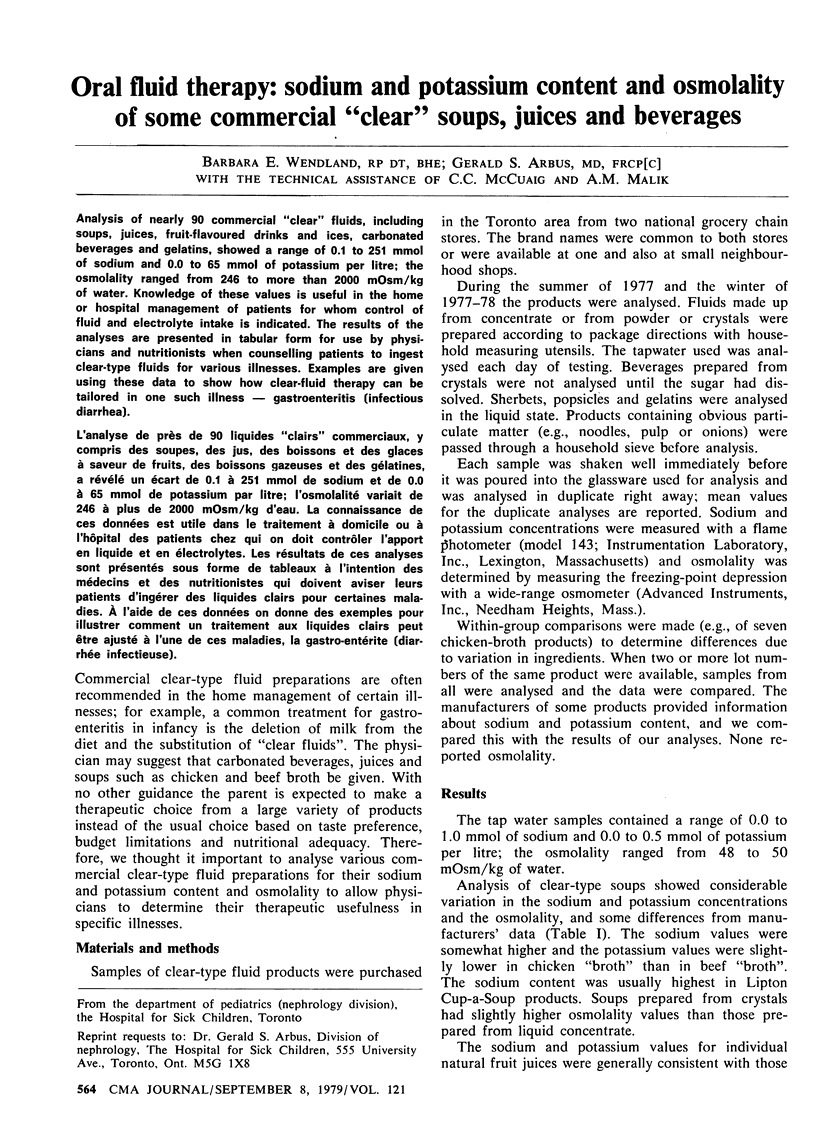
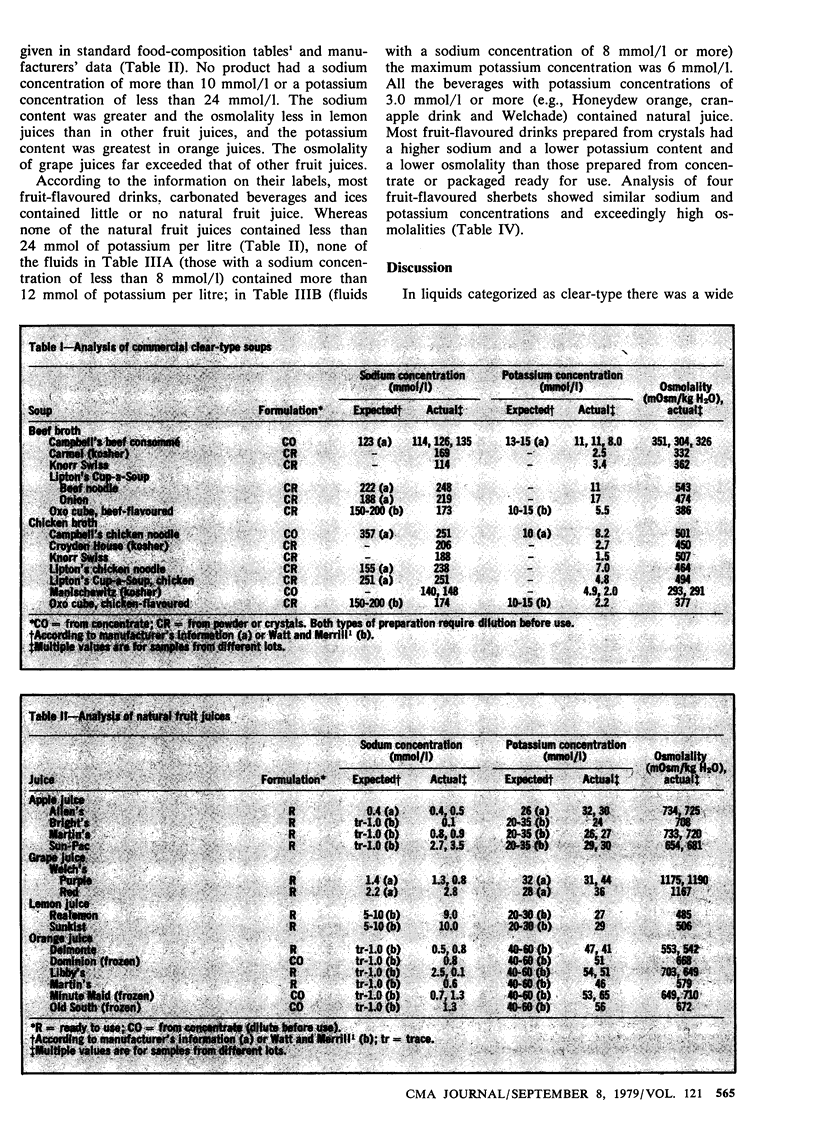
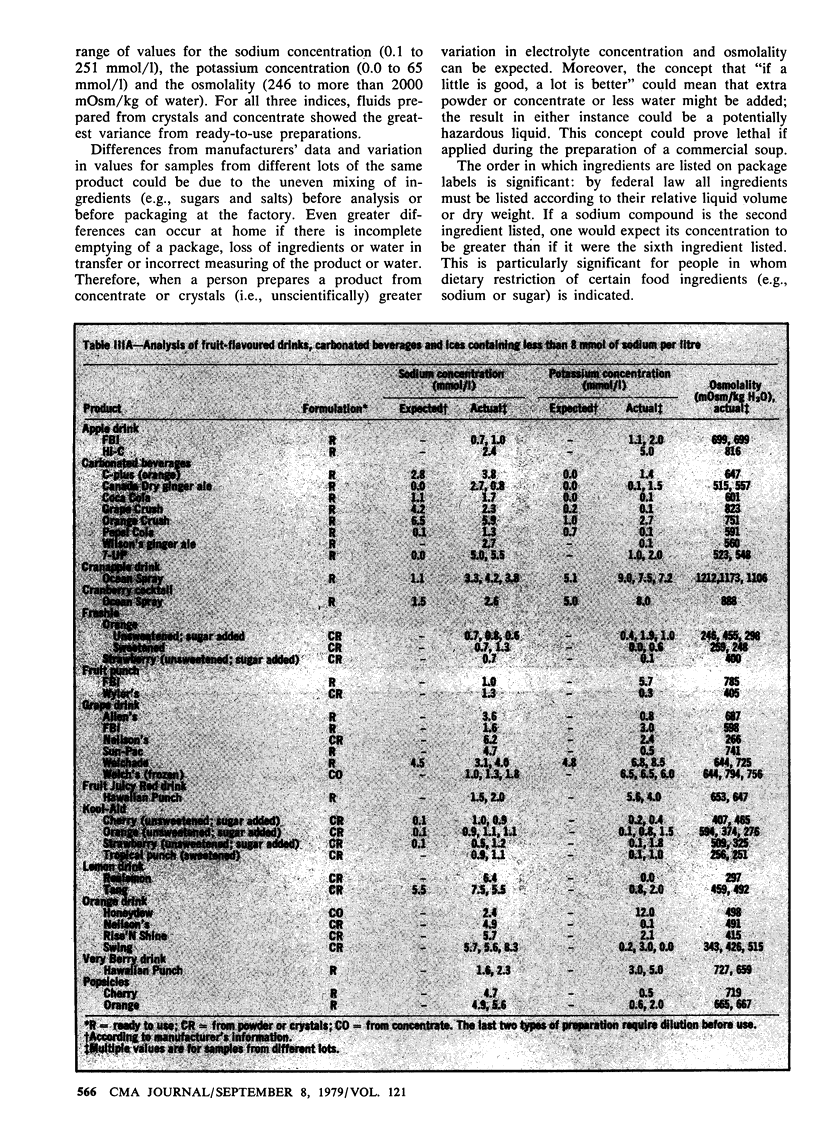
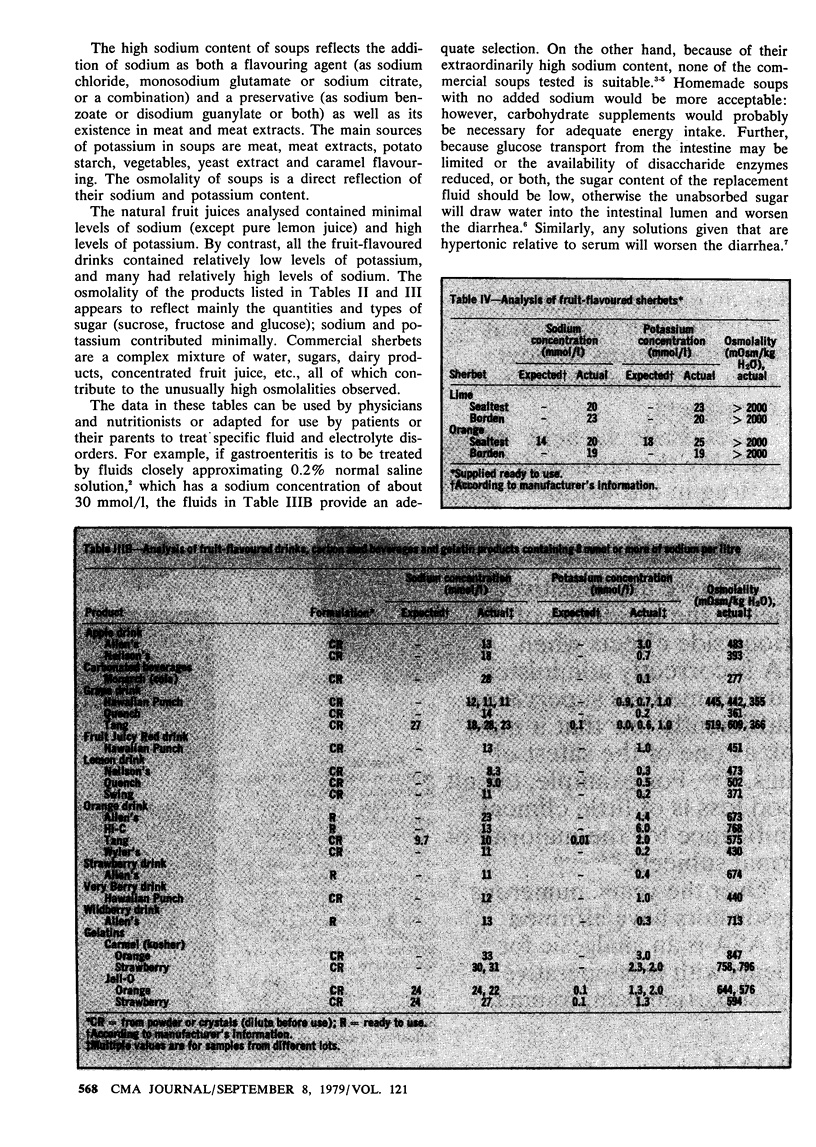
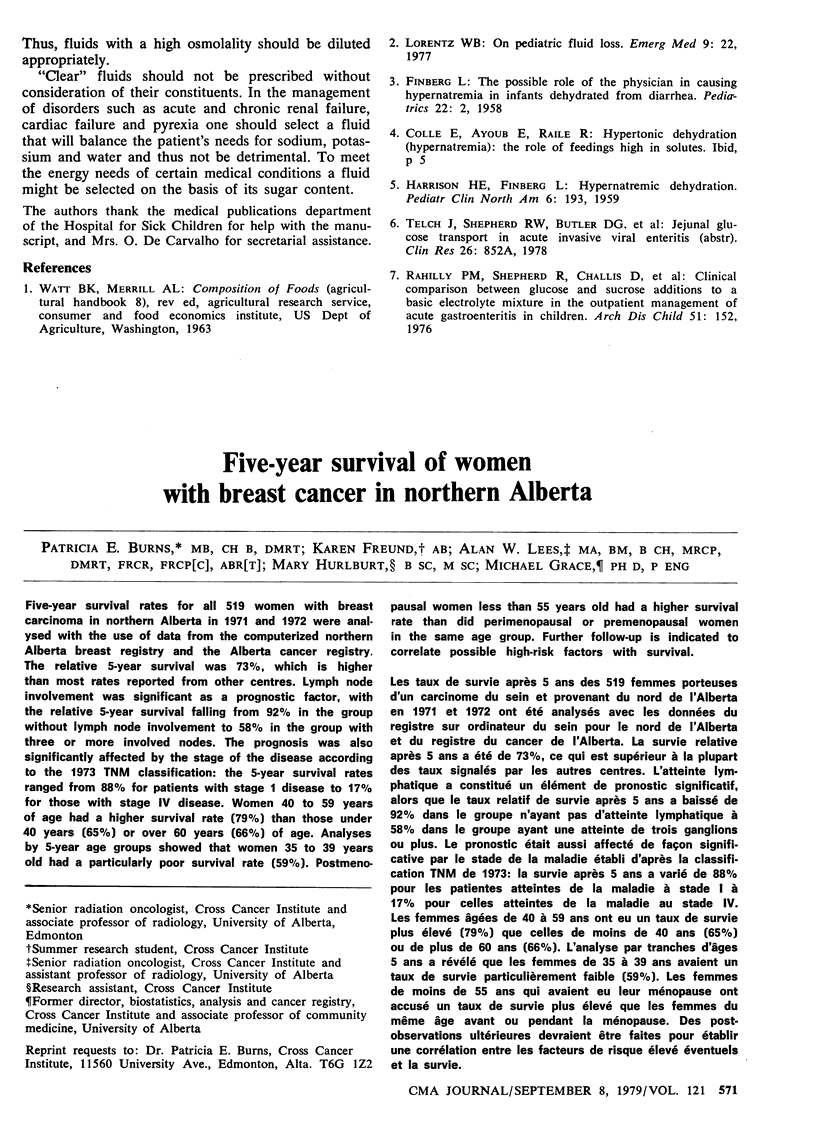
Selected References
These references are in PubMed. This may not be the complete list of references from this article.
- FINBERG L. The possible role of the physician in causing hypernatremia in infants dehydrated from diarrhea. Pediatrics. 1958 Jul;22(1 Pt 1):2–4. [PubMed] [Google Scholar]
- Rahilly P. M., Shepherd R., Challis D., Walker-Smith J. A., Manly J. Clinical comparison between glucose and sucrose additions to a basic electrolyte mixture in the outpatient management of acute gastroenteritis in children. Arch Dis Child. 1976 Feb;51(2):152–154. doi: 10.1136/adc.51.2.152. [DOI] [PMC free article] [PubMed] [Google Scholar]


